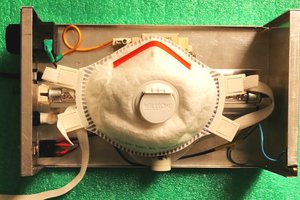1/5/2017
I'm thinking Arduino Yun, and a laser/LED proximity sensor that will detect the black square seen on the perimeter of the spinning meter disk, and transmit that data via my wifi network to my computer in the house, or to a web server so I can see my power usage live. Then I can graph the data for trending, as well as for verifying energy-efficiency home improvements or teenager-training(hey! shut off the lights! Maximize efficiently loading laundry! No, you don't need the heater running with the door open!)
I have an obsolete device that was leftover from about 10 years ago when home energy-monitoring devices were a fad, this one hooked up inside the electrical panel inside the house, having two clip-on CT's (current transformers) and a voltage input. Kind of like a Kill-A-Watt but whole-house measurement. Unfortunately, this device had a nice little LCD display that connected via some form of wireless (433mHz?) . I don't have the display, though. Bummer about GoodWill shopping sometimes!
As an electrician for a power company, I do have a number of really nice test instsruments I can use during my break times at my work, and I have had some training in power metering and measurement etc., so I'm definitely not clueless about how to measure such things, but I'm a newbie to Arduino, and getting kind of tired of trudging up the little hill behind the house on every 15th of the month to read the meter and log it into the PUD website. As a rural customer, we are expected to read our own meters and report numbers to them so they can bill us.
I need to start learning how to actually program in Arduino! I downloaded the software, have a couple Arduinos, and also downloaded Scratch, which is a sort of block-diagram visual programming language that apparently is a type of front end GUI for Arduino. So far, I have only done a couple simple shetches such as making the LED blink (Hello World?). In a previous age, I installed a lot of industrial PLC's, and programmed a few and troubleshot a lot, but that was the old ladder logic, so this should be a fun learning experience!
Doing some research online, I am told that a simple laser pointer can be pointed at a regular LED, causing the LED to generate a small voltage. This would create a pulse, or rather, an inverted pulse each time the meter disk makes a rotation. My power meter has a shiny aluminum-colored disk about 4 or 5 inches or so in diameter, with a black square about 1/2 inch by 1/2 inch in size. I plan to aim the laser at a slight angle at the black square, and the laser light will be reflected off the shiny part of the disk, but not reflect nearly as much off the black square.
I purchased a pair of UV LED emitter and receptor from Radio Shack, (or was that IR light? I'm really tired as I write this!) but testing on my breadboard did not go as expected. Perhaps the receptor doesn't work? It tests fine as if it were a diode, but no change that I can measure on my multimeter with light or dark, either with the UV emitter or natural/artifical room light. I tested the emitter by viewing it with my smart phone camera, so I know for sure it does put out UV (IR?) light.

 Enrico
Enrico
 Yannick (Gigawipf)
Yannick (Gigawipf)
 Giovanni Carrera
Giovanni Carrera
 Mark Mullin
Mark Mullin